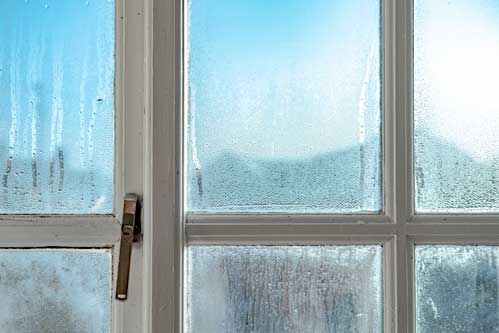By Kiran Sagoo on Wed 28 September 2022
How does an MEV System Improve Indoor Air Quality

Ventilation has become extremely important and due to the Government updating their regulations, many designers and construction experts are thinking about what ventilation solution suits the project(s) they’re working on and comply with the new regulations.
MEV is a popular system that can be used to fulfil the government’s building requirements for ventilation. It’s recently become more popular than ever due to homes becoming much more airtight, meaning there’s minimal background ventilation. Therefore, mechanical air volumes need to be higher to cover the air that would usually flow into a house that is less airtight. To achieve this, it’s better to move air continuously in low volumes rather than high volumes of air intermittently.
But what does MEV mean and how does it work?
What is a MEV system?
Simply put, MEV refers to Mechanical Extract Ventilation - a system that extracts stale and moist air from wet rooms like bathrooms, kitchens, utility rooms and en-suites. And you can either have it centralised or de-centralised.
‘Centralised MEV’ (c-MEV) is ventilation for wet rooms that connects all extractor vents in the building to a centralised unit (usually located in a hot loft or cupboard). The central unit is connecting with ducting and equipped with a fan inside which blows out moist air to the outside.
Centralised MEV is commonly used in new-builds and major renovations as it’s easier to install ducting when building from scratch, compared to installing it into an existing building.
How does centralised MEV work?
Centralised MEV works by the extractor fan pulling in indoor air from wet rooms and then releasing the air to the outside. Alongside this, trickle vents in windows pull in air from the outside to naturally ventilate the wet room.
Benefits of a centralised MEV system?
There are numerous advantages to having an MEV system, one being that it’s a low energy solution to ventilation, which contributes to the UK’s Net-Zero goal.
On the other hand, many of the benefits are in relation to our health.
The reason wet rooms are required to have ventilation is to remove the buildup of moisture and VOC’s in the dwelling. Moisture makes them more susceptible to mould growth than any other type of room in a building due to the amount of condensation created from activities like showering and cooking.
Moreover, breathing in the toxicity from mould growth is harmful to our bodies and can increase allergic reactions, breathing problems and cold-like symptoms. Not to mention mould can also destroy your interior and spread quite vastly and quickly.
Additionally, an MEV system helps get rid of unwanted odours that come from things like cooking pungent foods and cleaning products.
Overall, the system helps create good indoor air quality.
What is the difference between MEV and MVHR?
Although MEV and MVHR are both solutions to ventilation, they’re very different. MVHR is a whole house ventilation solution that has built-in filters to remove any dust and unwanted particles coming indoors. With MVHR you’re not required to have trickle vents in windows as MVHR pulls in outdoor air as well as extracting indoor air.
On the other hand, MEV is a ventilation solution in wet rooms and doesn’t have filters inside the unit. It simply removes stale air from wet rooms by extracting it and releasing it outside – you’re required to have trickle vents in windows so that outside air is being released indoors.
You can read about MVHR here.
Is centralised MEV suitable for my property?
Having a centralised MEV system means ducting would need to be installed through the ceilings of the property, and this is where it can get complicated. If you’re renovating, the case could be that the structure of your house is not ideal for ducting and that it’s costly to install. In this case, a decentralised MEV system would be the ideal solution.
What is the cost of a MEV system?
You might find yourself wondering, what is the cost of an MEV system?
Accurately pricing an MEV system is difficult without understanding the specific needs of the building. You’d need to take into consideration; the size of the wet rooms, the size of the building overall, how many wet rooms there are, whether you want particular sensors/functionalities and the type of ducting you’d require.
At Airflow we have a range of MEV products, you can view them here. Alternatively contact us and book a visit at our Air Academy or we’ll direct you to our preferred partner who can assist you.